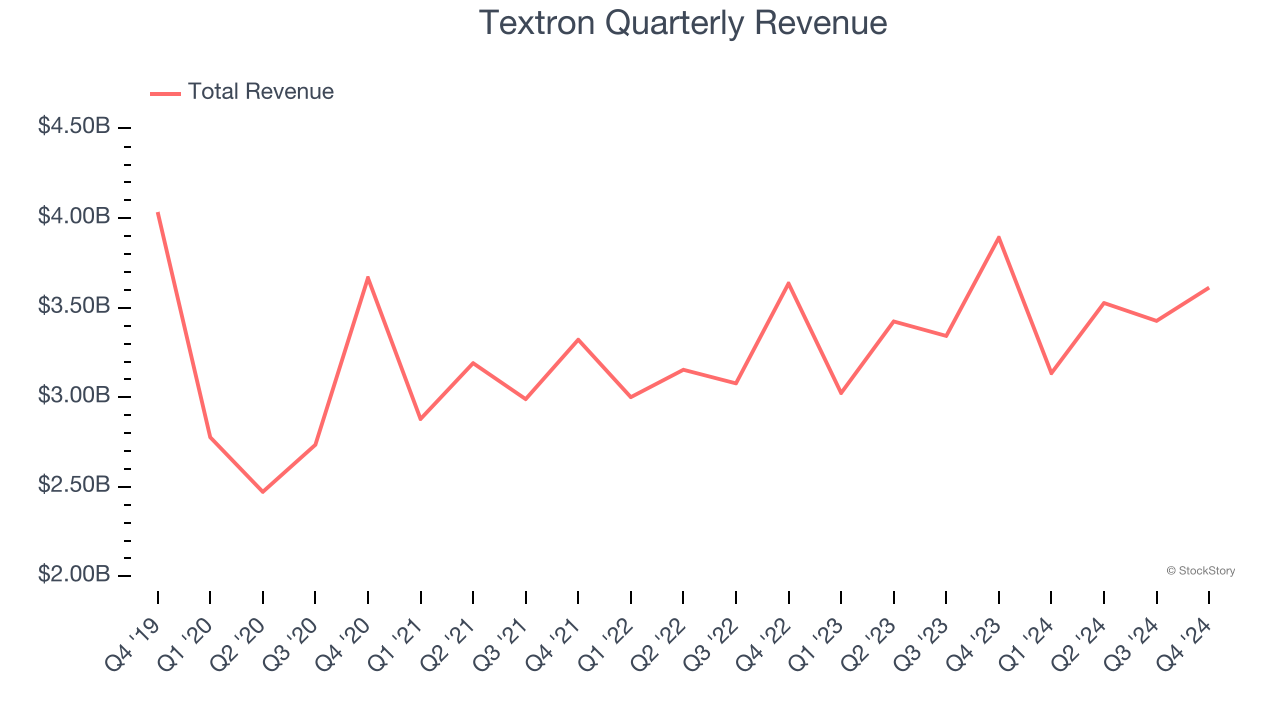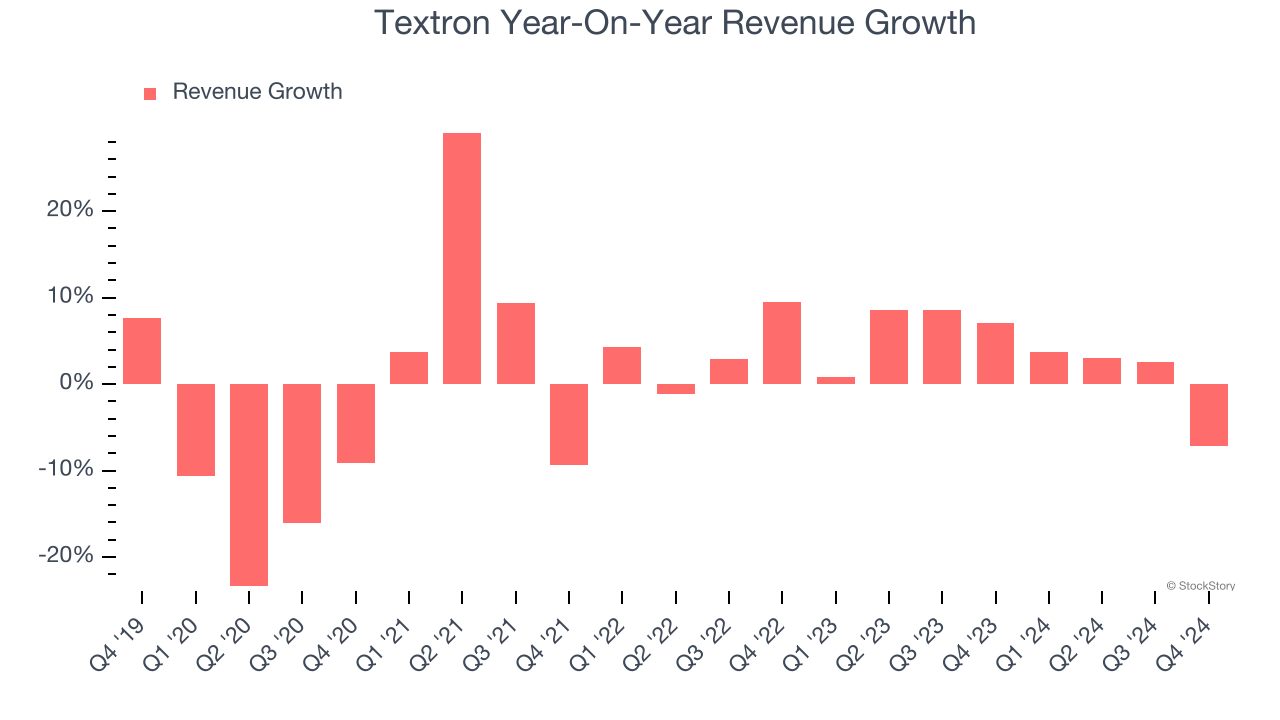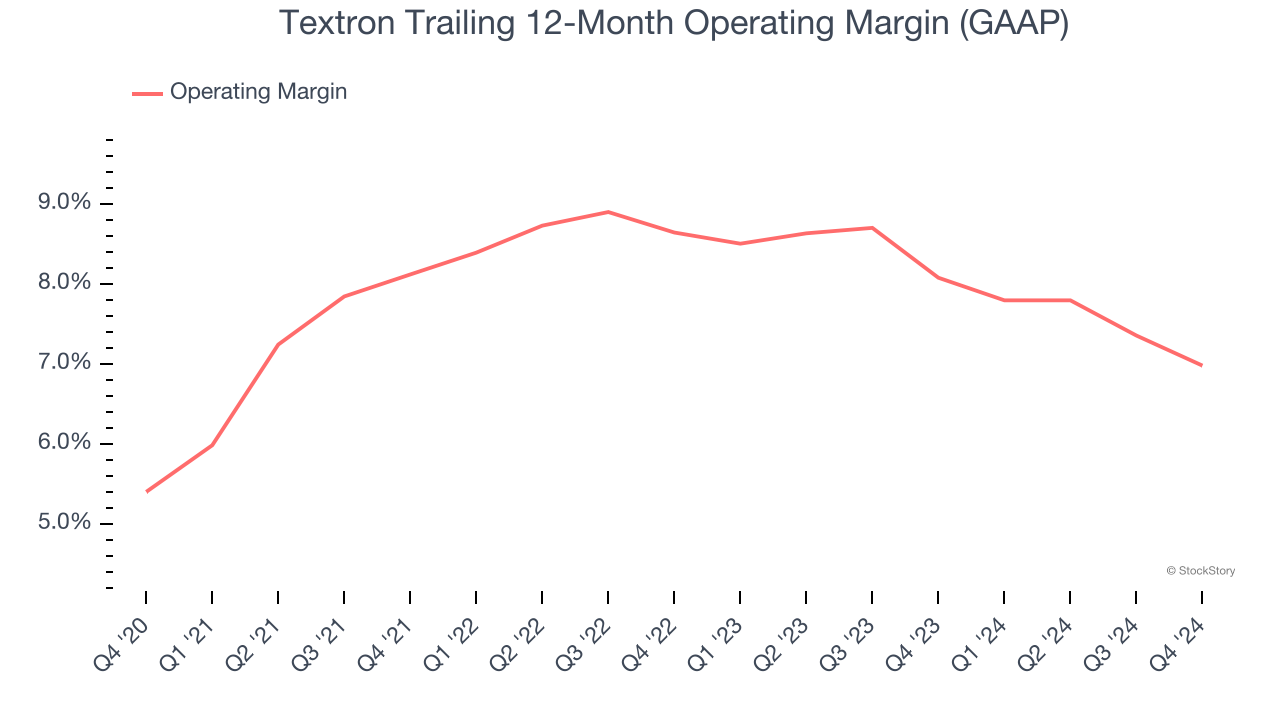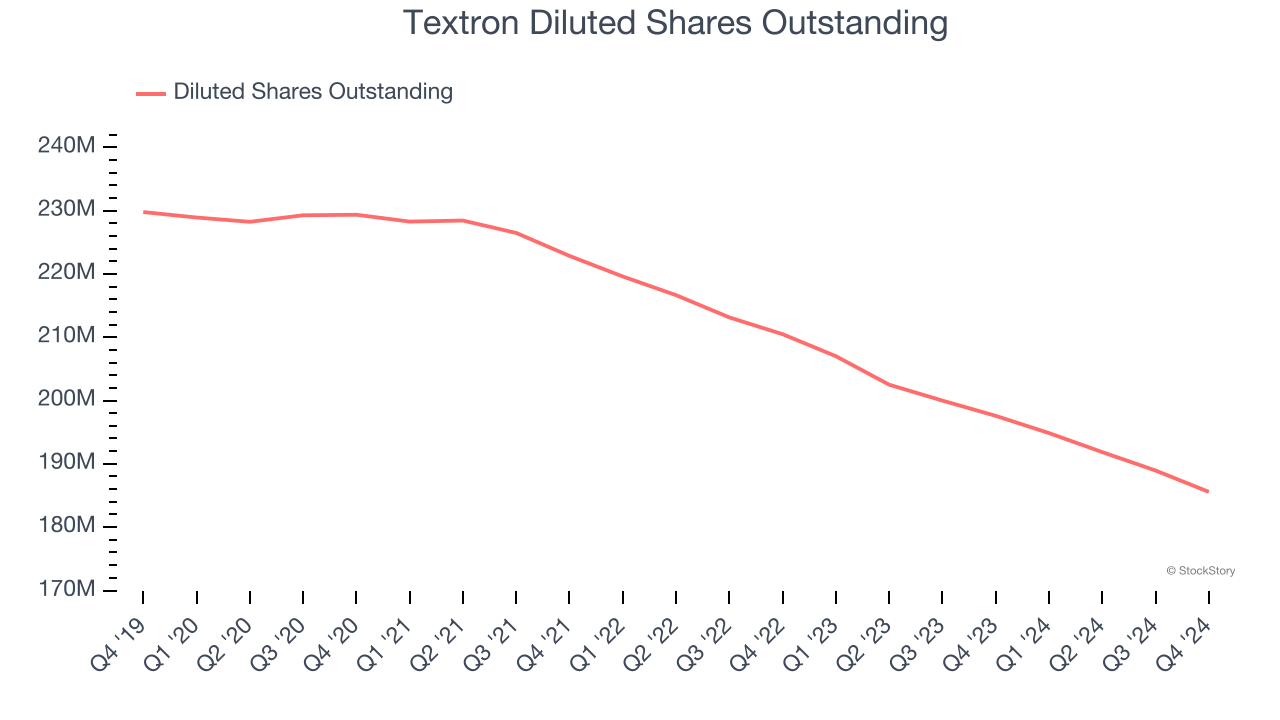
Aerospace and defense company Textron (NYSE:TXT) fell short of the market’s revenue expectations in Q4 CY2024, with sales falling 7.2% year on year to $3.61 billion. On the other hand, the company’s outlook for the full year was close to analysts’ estimates with revenue guided to $14.7 billion at the midpoint. Its non-GAAP profit of $1.34 per share was 6.8% above analysts’ consensus estimates.
Is now the time to buy Textron? Find out by accessing our full research report, it’s free.
Textron (TXT) Q4 CY2024 Highlights:
- Revenue: $3.61 billion vs analyst estimates of $3.82 billion (7.2% year-on-year decline, 5.3% miss)
- Adjusted EPS: $1.34 vs analyst estimates of $1.25 (6.8% beat)
- Adjusted EBITDA: $151 million vs analyst estimates of $393.5 million (4.2% margin, 61.6% miss)
- Management’s revenue guidance for the upcoming financial year 2025 is $14.7 billion at the midpoint, in line with analyst expectations and implying 7.3% growth (vs 0.5% in FY2024)
- Adjusted EPS guidance for the upcoming financial year 2025 is $6.10 at the midpoint, missing analyst estimates by 3.4%
- Operating Margin: 3.9%, down from 5.5% in the same quarter last year
- Free Cash Flow Margin: 8.1%, down from 9.6% in the same quarter last year
- Market Capitalization: $15.06 billion
Company Overview
Listed on the NYSE in 1947, Textron (NYSE:TXT) provides products and services in the aerospace, defense, industrial, and finance sectors.
Aerospace
Aerospace companies often possess technical expertise and have made significant capital investments to produce complex products. It is an industry where innovation is important, and lately, emissions and automation are in focus, so companies that boast advances in these areas can take market share. On the other hand, demand for aerospace products can ebb and flow with economic cycles and geopolitical tensions, which can be particularly painful for companies with high fixed costs.
Sales Growth
Examining a company’s long-term performance can provide clues about its quality. Any business can put up a good quarter or two, but the best consistently grow over the long haul. Unfortunately, Textron struggled to consistently increase demand as its $13.7 billion of sales for the trailing 12 months was close to its revenue five years ago. This fell short of our benchmarks and signals it’s a lower quality business.

Long-term growth is the most important, but within industrials, a half-decade historical view may miss new industry trends or demand cycles. Textron’s annualized revenue growth of 3.2% over the last two years is above its five-year trend, but we were still disappointed by the results. 
This quarter, Textron missed Wall Street’s estimates and reported a rather uninspiring 7.2% year-on-year revenue decline, generating $3.61 billion of revenue.
Looking ahead, sell-side analysts expect revenue to grow 6.7% over the next 12 months. While this projection suggests its newer products and services will catalyze better top-line performance, it is still below the sector average.
Here at StockStory, we certainly understand the potential of thematic investing. Diverse winners from Microsoft (MSFT) to Alphabet (GOOG), Coca-Cola (KO) to Monster Beverage (MNST) could all have been identified as promising growth stories with a megatrend driving the growth. So, in that spirit, we’ve identified a relatively under-the-radar profitable growth stock benefiting from the rise of AI, available to you FREE via this link.
Operating Margin
Operating margin is a key measure of profitability. Think of it as net income - the bottom line - excluding the impact of taxes and interest on debt, which are less connected to business fundamentals.
Textron was profitable over the last five years but held back by its large cost base. Its average operating margin of 7.5% was weak for an industrials business.
On the plus side, Textron’s operating margin rose by 1.6 percentage points over the last five years.

This quarter, Textron generated an operating profit margin of 3.9%, down 1.6 percentage points year on year. This reduction is quite minuscule and indicates the company’s overall cost structure has been relatively stable.
Earnings Per Share
We track the long-term change in earnings per share (EPS) for the same reason as long-term revenue growth. Compared to revenue, however, EPS highlights whether a company’s growth is profitable.
Textron’s EPS grew at an unimpressive 7.9% compounded annual growth rate over the last five years. On the bright side, this performance was better than its flat revenue and tells us management responded to softer demand by adapting its cost structure.

We can take a deeper look into Textron’s earnings to better understand the drivers of its performance. As we mentioned earlier, Textron’s operating margin declined this quarter but expanded by 1.6 percentage points over the last five years. Its share count also shrank by 19.2%, and these factors together are positive signs for shareholders because improving profitability and share buybacks turbocharge EPS growth relative to revenue growth. 
Like with revenue, we analyze EPS over a shorter period to see if we are missing a change in the business.
For Textron, its two-year annual EPS growth of 10.9% was higher than its five-year trend. This acceleration made it one of the faster-growing industrials companies in recent history.
In Q4, Textron reported EPS at $1.34, down from $1.60 in the same quarter last year. Despite falling year on year, this print beat analysts’ estimates by 6.8%. Over the next 12 months, Wall Street expects Textron’s full-year EPS of $5.48 to grow 14.2%.
Key Takeaways from Textron’s Q4 Results
It was encouraging to see Textron beat analysts’ EPS expectations this quarter. On the other hand, its full-year EPS guidance missed significantly and its revenue fell short of Wall Street’s estimates. Overall, this was a softer quarter. The stock traded down 3.9% to $78.01 immediately following the results.
Textron’s earnings report left more to be desired. Let’s look forward to see if this quarter has created an opportunity to buy the stock. The latest quarter does matter, but not nearly as much as longer-term fundamentals and valuation, when deciding if the stock is a buy. We cover that in our actionable full research report which you can read here, it’s free.














